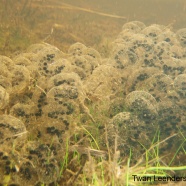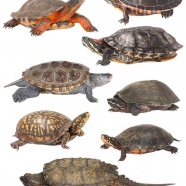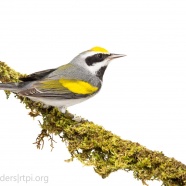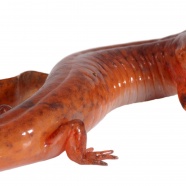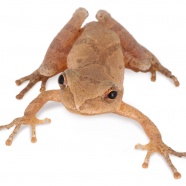Amphibians Abound
The first wave of amphibian breeding has now passed, and early vernal pool breeders are making room for the next wave of frogs to show up at our local wetlands. American toads, pickerel frogs and leopard frogs have been calling for a week or so now, and green frogs and bullfrogs will join in soon, Of course, the spring peepers just won’t stop calling at all… Did you know that you can easily tell the difference between frog eggs and toad eggs? Frog eggs are always laid in a clump or a floating raft, while our toads produce long, corkscrewing strands with a single line of eggs in the center...
Read MoreTaking Time for Turtles
The weather is finally warming up in the northeast and the first basking turtles are out. Soon they will start moving towards favorite wetlands or preferred egg-laying sites, risking their lives as they cross our roads. Please slow down and avoid hitting these animals – no matter how tough they may appear, they are no match for a fast moving car. Even straddling a turtle with your wheels will often cause it to hit the underside of your car if you’re moving at a decent clip. Please stop, if you can safely do so, and gently help the turtle cross in the direction it is headed. Many...
Read MoreGolden-winged Warbler
Without a doubt, one of the highlights of our recent work in Costa Rica was the recapture of this Golden-winged Warbler, which was banded last year in the same area it was caught this year, near Rara Avis Rainforest Lodge. Since we last saw it in March of 2016, it undoubtedly traveled back to its breeding grounds somewhere in North America and hopefully managed to find a mate of its own species. Golden-winged Warblers are suffering from dramatic declines throughout their range, and are increasingly hybridizing with closely-related Blue-winged Warblers. As a result, this species is at serious...
Read MoreSpring Salamander
Hey look – a hot-dog with eyes! Wait, that’s a Spring Salamander (Gyrinophilus porphyriticus)! This large, lung-less salamander is a common resident in the many springs and streams that run through our local forests. It’s stature and bright coloration make it stand out, but also serve as protection from predators. Spring salamanders can grow to over eight inches in length and produce noxious skin secretions while using their color to mimic even more toxic species. It isn’t a salamander any predator would want to mess with, and it probably wouldn’t taste anything...
Read MoreSpring Peepers
Spring Peepers are a type of small tree frog. Truthful to their name, they emerge from hibernation in early spring. Soon after, the males – often hundreds at a time – will take over wetlands and call on warm and rainy nights to stake out a territory and attract a mate. Their surprisingly loud “peep” calls are usually produced from a safe location hidden in dense vegetation, and it can be difficult to spot them. An inflatable vocal sac on their throat serves as an amplifier, which allows them to call very loudly. The sound produced by a chorus of these inch-long frogs can be truly deafening...
Read More



